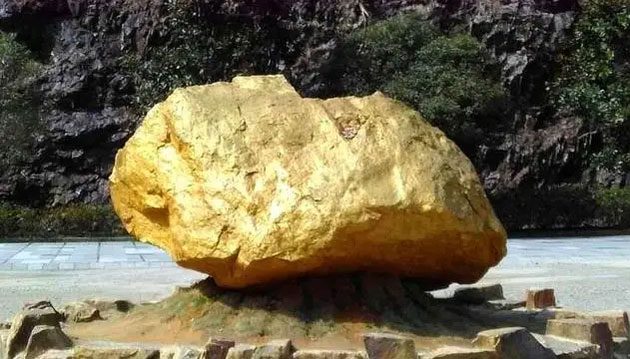A 3,360-hectare park is cordoned off due to the discovery of a peculiar glimmering yellow rock. Experts confirm it is the largest treasure ever found.
Located in Suichang Park in Lishui, Zhejiang (China), this expansive area of 3,360 hectares is a popular destination for many visitors. It features a series of interconnected caves and is now one of the region’s most famous attractions.
In 2015, while researchers were excavating ore at the park’s exit, they accidentally stumbled upon a peculiar yellow glimmering rock embedded in the mountain. At that time, some staff attempted to dig it out, but the deeper they went, the larger the rock appeared, prompting the use of advanced technology to extract this mysterious stone. Based on initial analyses, experts indicated that this was a significant treasure.
To excavate this rock, researchers employed smart excavation technology, with all machines operated remotely. The operator merely needed to click a button, and the cutters, conveyors, and specialized mountain excavation equipment would operate in succession. The entire process was separated from human presence to ensure safety and efficiency.

Additionally, a high-resolution AI camera was installed for monitoring, aiming to save energy and adjust speed. A measuring device was also set up to assess the excavation levels to ensure system connectivity. Through the construction of infrastructure and integration of smart information systems, the excavation process no longer required human supervision.
Moreover, an integrated smart power supply platform was established for real-time data transmission, featuring remote control capabilities. This system was equipped with intelligent access control, high-resolution cameras, and other means to facilitate energy transition.
Once the entire rock was excavated, all experts were astounded; they had never seen such a large gold ore. Specifically, this treasure weighs a total of 90 tons, making it the largest gold ore discovered to date.
Tests indicated that this massive treasure contained 216.7 grams of gold and 3,677 grams of silver per ton. Additionally, this treasure was excavated from the Golden Cave site in Suichang Park, Lishui, Zhejiang (China), where experts analyzed and confirmed that this gold treasure was formed around 1,000 years ago.
To provide a more detailed analysis of this treasure, China utilized artificial intelligence technology such as 3D scanning. Concurrently, research teams identified logical combination methods based on specialized documentation and 3D technology, and conducted material restoration based on their studies.
During this process, cloud computing easily calculated and analyzed various data of the object in a 3D model, including the compatibility of connection points, overall context, surrounding environment, etc., thus providing reliable data for experts throughout the treasure analysis process.
After this gold treasure was brought to the surface, Suichang Park in Lishui, Zhejiang (China) reopened for tourists. Instead of placing the gold ore in a museum or refining it, experts coated it with a layer of powdered gold and left it at the roadside near the scenic entrance for public viewing. Notably, experts claimed that no one dared to steal the rock containing gold and silver.
The reason is quite simple: this gold treasure weighs 45 tons, making it nearly impossible to move without specialized transport tools. If machinery were used to carry it away, it would make loud noises and be quickly detected. Furthermore, there are numerous surveillance cameras around, making it very difficult to steal this colossal treasure.
Moreover, even if stolen, it would need to be refined bit by bit, and the cost of refining is extremely high, so the potential gain is outweighed by the risk. Therefore, Suichang Park in Lishui, Zhejiang (China) confidently placed the large gold ore by the roadside at the entrance. For Suichang Park, this gold treasure holds greater cultural significance than monetary value and is worth protecting for the community.


















































